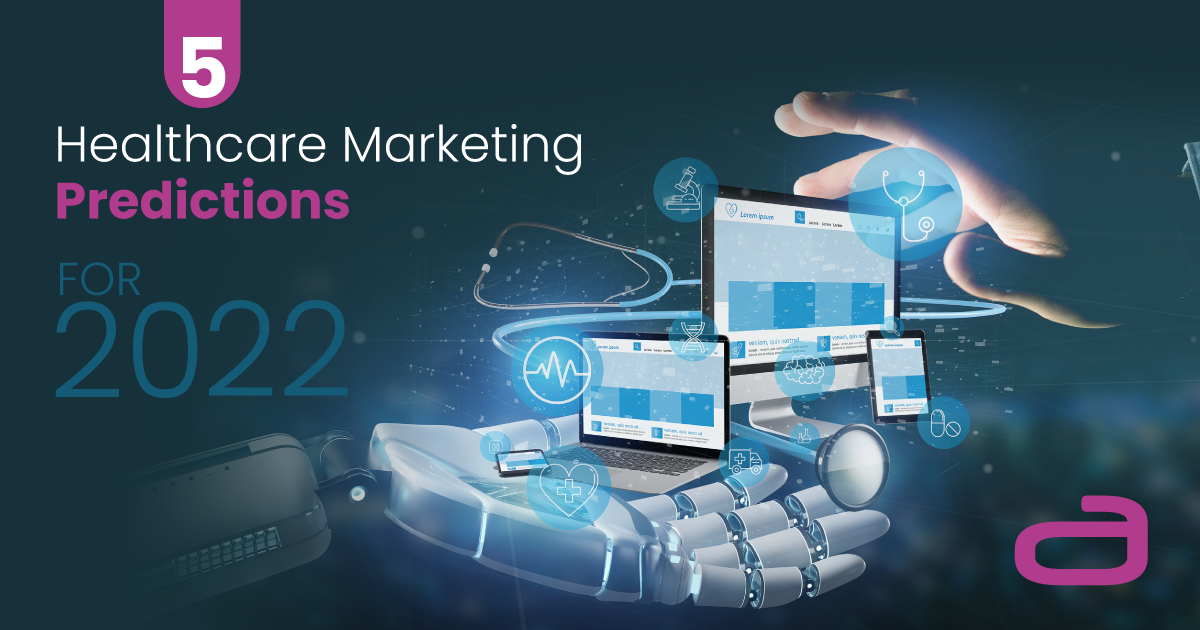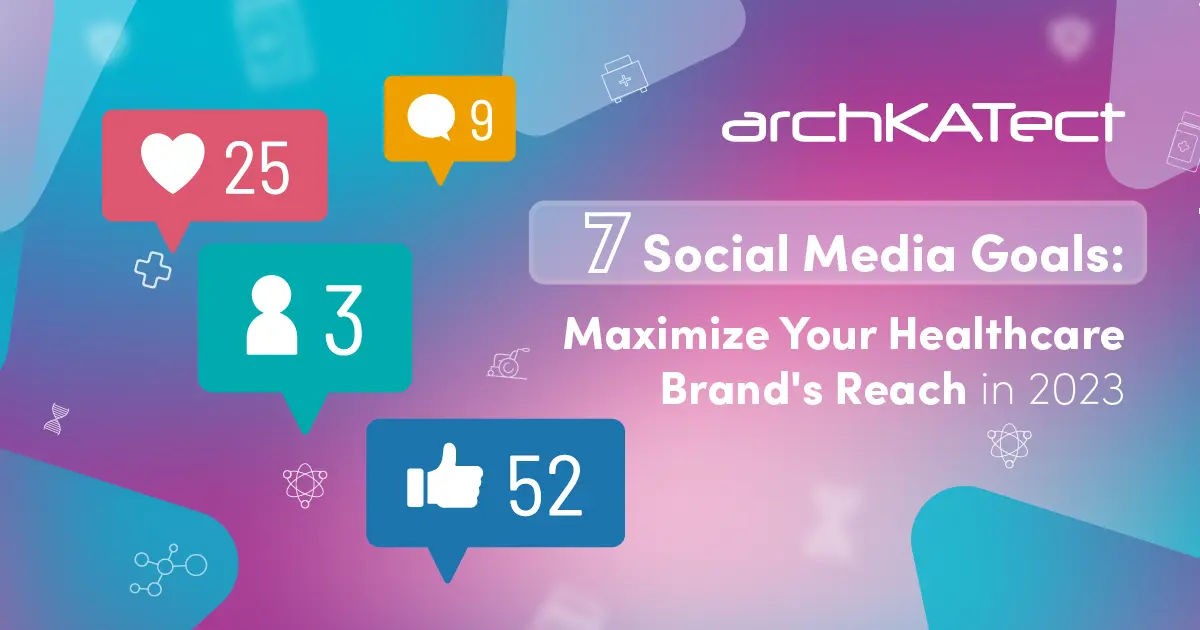If we’re sure of anything, healthcare marketing will continue changing. Clients and businesses have more control and access to the consumerization of healthcare. That demand pushes modern digital marketing favorites like user experience, personalization, and conversion rate optimization to evolve. All of it means your digital marketing and website strategies need to be on point going into the coming year.
The influx of change during Covid-19 has extended to the marketing department, and there are plenty of tools and opportunities available to engage more effectively with audiences. The digital marketing atmosphere is fueled by competition. And if you want your business to thrive, you should stay updated on the latest tools and methodologies for boosting your online presence.
2022 Marketing Predictions
As so many new movements evolve, staying on top of the latest healthcare marketing trends can be challenging. Although the healthcare industry has been traditionally slow to adopt new technology, healthcare companies are steadily exploring digitalization in its many forms to bring novel treatments to patients, innovate diagnostic methods and tools, and simplify the way care is delivered and managed.
Here are the trends you need to be aware of:
- Content
The first trend is the resurgence of Content Marketing. Before the pandemic, startup founders, growing brands, and B2B SaaS marketers would first consider buying social media ads to grow their business. Now, they are doubling down on content marketing. Why? Because Google told us content marketing is the best way to rank for buyer search. Research from the Content Marketing Institute states that more than two-thirds of marketers are increasing their content marketing budgets in 2022, with 1 in 5 increasing by double digits.
- Hybrid Events
The pandemic had a significant impact on the workplace and how businesses function. As the economy opens, hybrid events evolve and become a part of our new normal. They offer a choice that is appealing even without the restraints of the pandemic.
While the pandemic didn’t start the hybrid event culture, it did drive businesses to adopt this model in light of remote work, social distancing, and in-person event cancellations. Hybrid events offer a combination of in-person and virtual components to make them more sustainable and inclusive. It offers an opportunity for companies to attend more conferences. Because remote attendance can be a lot cheaper and can take less time, it is an attractive addition, not a replacement, to the in-person events.
- Artificial Intelligence
Artificial intelligence (AI) is gaining popularity in the healthcare sector, and we’re going to see exponential leaps in what this technology is capable of over the next few years. For example, AI tools enable firms to analyze thousands of matrices to produce precise demand and growth forecasting extrapolations. Moreover, health care, finance, and other industries can use AI-powered tools to formulate digital strategies to attract and retain customers.
Companies can implement AI into different areas of their digital marketing strategies. For instance, businesses can use AI tools to automate their SEO work by getting real-time feedback on the usage of keywords, links, and more. Firms can also use AI-based content planning and optimization tools, AI-powered email marketing tools, and AI-based digital advertising tools to streamline their digital marketing operations.
- Augmented Reality
Live streaming medical procedures is an exceptional training experience and a fantastic way to connect one of the highest-quality training aids ever created to medical staff who may be far away or have little experience with rare procedures.
While this technology is used in a patient-doctor setting, it’s only a few steps away from home use. Augmented reality can help patients understand medical issues, providing a fantastic opportunity for those in healthcare to give patients the information they are seeking in a way that doesn’t involve eight hours of Googling and headaches over confusing medical terms. It could be an excellent way to attract patients to facilities’ websites and specialty doctors.
- The Use of Wearable Devices
Wearable Devices such as smartwatches or continuous glucose monitors are sensory-based accessories worn in the form of watches, bracelets, chest straps, footwear, or glasses. These devices help people understand how they can sleep better, monitor their blood sugar, and even eat better. Remote patient monitoring through wearables does more than just basic health readings. It has the potential to decrease illness, reduce in-person doctor visits and be financially advantageous.
Wearable tech can provide enormous benefits to healthcare providers. By using wearable devices to monitor patient data over a long period, medical professionals can better understand the issues that are affecting the patient. They can use this data to make a more accurate diagnosis than without using the device.
Wrapping Up
These technological advances are exciting, but we shouldn’t lose sight of the basic principles for a great marketing strategy. Although it is essential to have a solid digital presence to reach your target audience, it is crucial to keep the personal element of your business thriving as well. Employee interaction with your clients will enable your organization to get the best out of every employee, who will act as ambassadors for your brand and grow sales and conversions genuinely and authentically. This is an important B2B marketing trend that we are seeing right now.
As our reliance on technology grows, more and more organizations realize they need to be more “human” and activate the storytelling and organic sharing power of employees – this is the “paradox of AI and technology.





